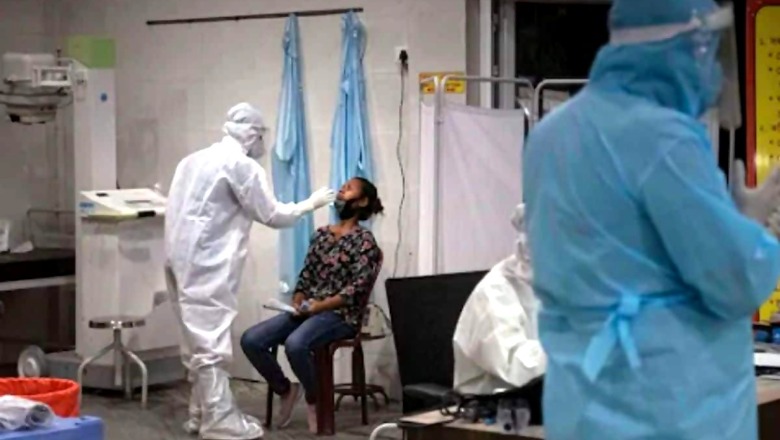
views
The number of people in the grip of the novel coronavirus pandemic is rising every day in India and most parts of the world. It is also clear now that till an effective vaccine reaches from the lab to the masses, the situation will not improve a lot. Both the virus and the impact of the disease appear to be transforming progressively, reaching new areas of our lives. Much has been written about the crisis and many more studies, reports and research papers are in the pipeline. This article will deal with only some visible challenges being faced by Indian tribals and why this social group needs more support at different levels in these trying times.
According to a report by an expert committee of the central government in December 2018 on ‘Tribal Health in India’, 104 million tribal people in the country are largely concentrated in ten states and in the Northeast. Almost 90 per cent of the tribal population lives in rural areas. The report further states that there are 90 districts or 809 blocks with more than 50 per cent tribal population and they account for nearly 45 per cent of the Scheduled Tribe (ST) population in the country. In other words, almost 55 per cent of the tribal population lives outside these 809 tribal majority blocks. According to the ministry of tribal affairs, the percentage of ST people living below the poverty line in 2011-12 was 45.3% in the rural areas and 24.1% in urban areas, compared to 25.7% in rural areas and 13.7% in urban areas for the overall population.
Against this backdrop, the challenges posed by the coronavirus pandemic appear far more serious for the tribal people as a whole than the rest of the population due to their close-knit communities living in rural areas, limited resources of livelihood, and poverty. Difficulties in access to Covid-19 testing and healthcare facilities, disruption of supply chains, closure of artisans’ workplaces and units of textile workers during lockdown, struggle for food and livelihood due to reverse migration, lack of opportunities and monetary earnings due to travel restrictions both for domestic and international visitors and unsold stocks of their products are some of the key challenges people belonging to this social group are facing more acutely in these times. It appears that this grim situation for them will not go away soon even after flattening the curve of the disease till the time all nations and the world population go back to pre-Covid spending and lifestyles.
This social group, though small in number, is extremely important in Indian society due to the unique traditional skills of earning livelihood through forest produce, arts, crafts and weaving, etc, of the members. Their inherited survival instincts against odds over centuries still generate curiosity among medical researchers and social scientists.
All this may, however, change due to Covid-19. While important to remain optimistic about the post-Covid world, it is equally vital not to lose sight of the impact of the pandemic on Indian tribals, who are often at the bottom of the ladder of benefits received from educational, skill, health and financial opportunities. That the tribals are the least educated, healthy and financially secure of all communities is no hidden fact. This has been revealed time and again by several pan-India studies conducted by the National Sample Survey Organisation (NSSO). Take, for instance, the research findings pertaining to the textiles sector: the incidence of anaemia is the highest among tribal employees, especially the women. Given the presence of such grave socio-economic handicaps, the ability of tribals to cope with this health crisis would be significantly diminished.
To take the story forward, it is important to note that Indian industries, both small and big, are reeling under one of their most acute crises because of the pandemic. With reduced demand, supply chain disruptions and financial constraints faced by the firms, especially small ones, the impact on tribals could not have been worse. In the event of such massive upheaval, the tribals—whether employees or self-earning—given their already marginalised existence, could be the hardest hit. And this, in fact, has been happening. With strict enforcement or on-and-off lockdown across the country, many tribal people have lost access to the collection of minor forest produce (MFP), a major source of additional income for their households. Tribal families resort to this activity in the summer months of April to June to supplement their incomes.
Most importantly, with strict social distancing and lockdown norms in place for more than four months, most of the small-scale units could be staring at permanent closure. And with that comes loss of jobs and livelihood. The tribals are particularly vulnerable to this because they are neither adequately skilled nor educated to integrate themselves with the latest ‘digital push’ being advocated by firms across the board. Also, with hospitals being flooded with Covid-19 patients, there is little room for a poor tribal person suffering from 'traditional' diseases like malaria, leprosy and tuberculosis. Yet another major fallout of the crisis is on the education of the tribals, especially their girls. With pernicious school closures, the fate of literacy and education in tribal areas appears doomed for now. Given this worrisome situation, it is high time for the stakeholders in tribal welfare, as well as governments both at the Centre and states to pay more attention to the plight of tribal people during the Covid-19 crisis.
As measures to combat the predicament of the tribals, the government needs to strengthen healthcare, food security, wage employment, the Forest Rights Act and MFP productivity. As awareness about the pandemic and safety measures are key issues before any further steps, a special drive to spread information should be run in tribal-majority blocks across different states by using familiar tools as well as local languages and dialects. Final-year medical students from nearby educational institutes may be roped in to provide preventive basic health check-ups and treatment while maintaining constant vigil on the situation.
The central government, as immediate relief, has undertaken steps to mitigate the sufferings of the tribal gatherers and artisans in these difficult times by hiking the minimum support price (MSP) of MFP. The Tribal Cooperative Marketing Development Federation of India (TRIFED) under the ministry of tribal affairs has been asked to plan the procurement of products worth approximately Rs 23 crore from tribal artisans across the country. Besides, the government is reaching out to industry federations, corporates and business organisations to encourage them to purchase stocks of tribal artisans. This immediate relief is satisfying, but there is still a long way to go.
For the medium and long term, governments both at the Centre and the states have to revisit their responses for the tribal social group because of the pandemic and fine-tune their strategies for the community once the disease is controlled or gone. The dignified sustenance of tribal people in the changed scenario could happen only if the ministry of tribal affairs along with the ministries of finance, textiles, skill development and entrepreneurship, information technology, tourism, and commerce make concerted efforts to chalk out programmes and policies with the help of NGOs, self-help groups, IITs and IIMs, and other stakeholders. This social group is the right target for mission mode focus under the 'Vocal for Local' policy.
The process of imparting digital skills and literacy and strengthening of digital infrastructure must be hastened to integrate the relatively better-skilled and literate tribal employees in the ongoing digital push, which is all but evident now given the scale and spread of the pandemic, causing disruptions to the age-old perceptions of holding activities in-person. Micro-financing institutions may be encouraged further to extend activity-related small credit lines to the tribal population to restore their confidence. The IITs and IIMs may contribute by drawing needs-based short-term strategies through providing user-friendly technical tools and marketing strategies. Governments may ensure better coordination among different stakeholders to avoid overlaps at the time of programme implementation. Special refresher and training programmes for grassroots-level officers may be undertaken so that they are well-informed about the fine-tuned measures for the welfare and sustenance of tribal people and also share with them the knowledge on these subjects.
(The author is a UGC-Senior Research Fellow doing PhD at the Indian Institute of Foreign Trade, Delhi. Her research interest is in the areas of gender, labour, textiles and trade. Views expressed are personal.)




















Comments
0 comment